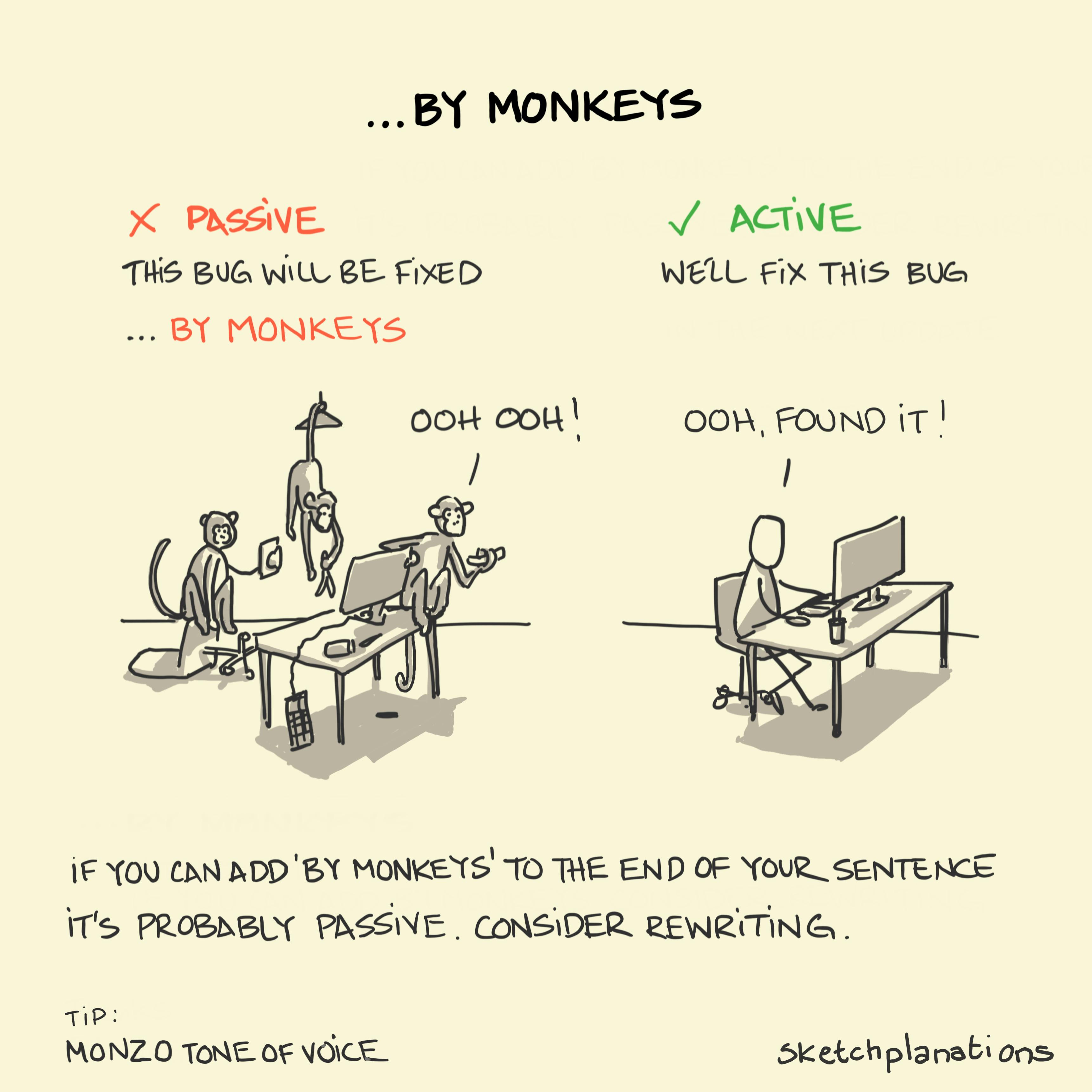
By monkeys
Compare if you please: Sentences that have been written in a passive voice are generally less powerful than sentences that have been written in an active voice. Active writing hits harder than passive writing. It's easy for passive writing to slip in. Here's a handy technique to help you spot passive writing in your sentences. Try adding "...by monkeys" to the end of the sentence. If it still makes sense, then there's a good chance it's passive. In the example in the sketch: "The bug will be fixed" you can tack on "...by monkeys" and all makes sense. It's passive. Passive writing is an easy way to distance ourselves and our opinions from what we're writing. Active writing takes ownership and responsibility and connects with the reader. "We'll fix the bug. Sorry about that." I love the "...by monkeys" example for spotting passive writing as it vividly shows how responsibility disappears. This super example and technique is from Monzo's excellent tone of voice guidelines. Handy for writing copy on the web, for your brand, and for everyday life. You might like the excellent Hemingway app to spot other non-Hemingway slips in your writing. I ran this post through it and cut out a lot of fluff. I also love the classic The Elements of Style by Strunk and White. More writing sketchplanations…Compare if you please: Sentences that have been written in a passive voice are generally less powerful than sentences that have been written in an active voice. Active writing hits harder than passive writing. It's easy for passive writing to slip in. Here's a handy technique to help you spot passive writing in your sentences. Try adding "...by monkeys" to the end of the sentence. If it still makes sense, then there's a good chance it's passive. In the example in the sketch: "The bug will be fixed" you can tack on "...by monkeys" and all makes sense. It's passive. Passive writing is an easy way to distance ourselves and our opinions from what we're writing. Active writing takes ownership and responsibility and connects with the reader. "We'll fix the bug. Sorry about that." I love the "...by monkeys" example for spotting passive writing as it vividly shows how responsibility disappears. This super example and technique is from Monzo's excellent tone of voice guidelines. Handy for writing copy on the web, for your brand, and for everyday life. You might like the excellent Hemingway app to spot other non-Hemingway slips in your writing. I ran this post through it and cut out a lot of fluff. I also love the classic The Elements of Style by Strunk and White. More writing sketchplanationsWWW…
Read more…





